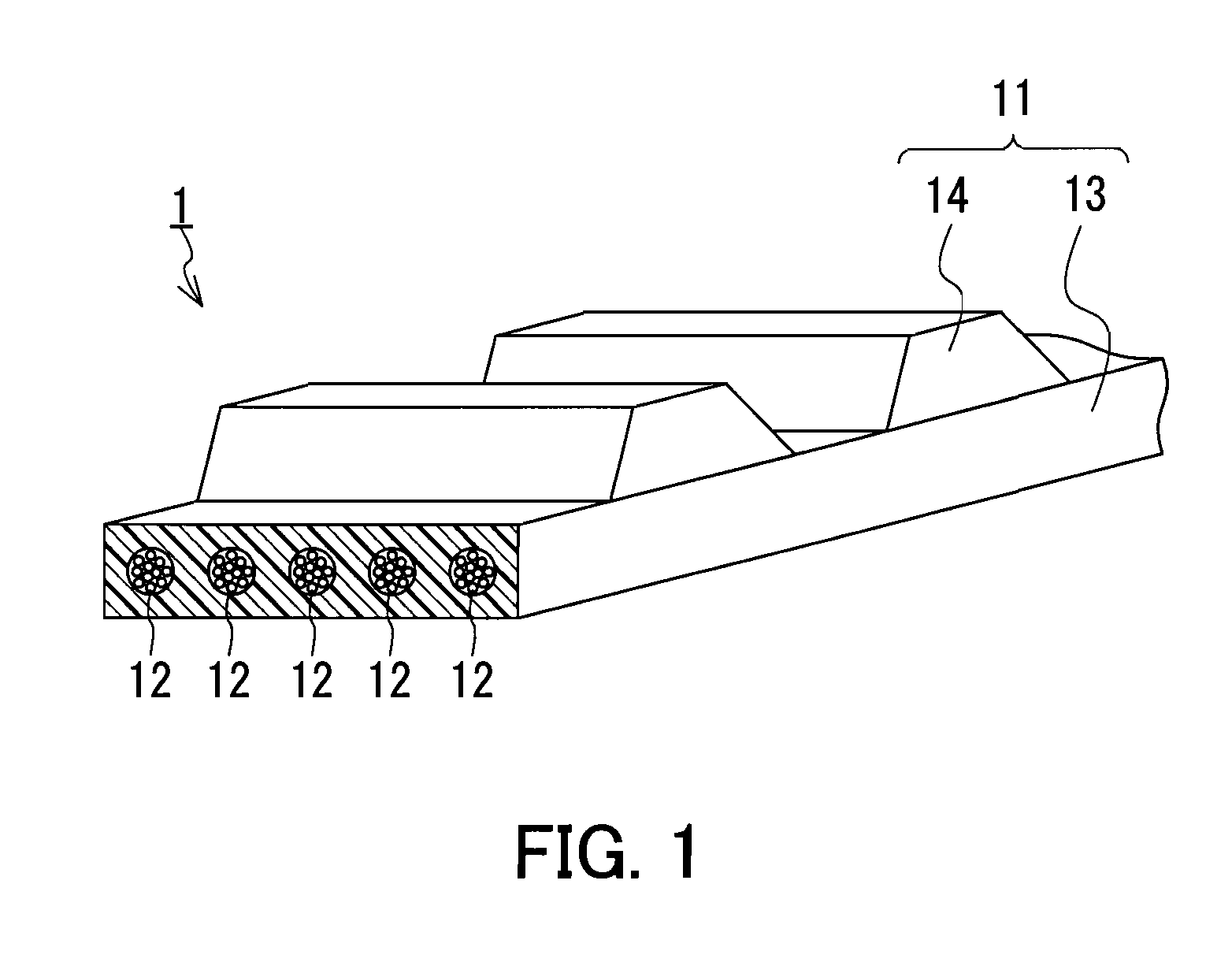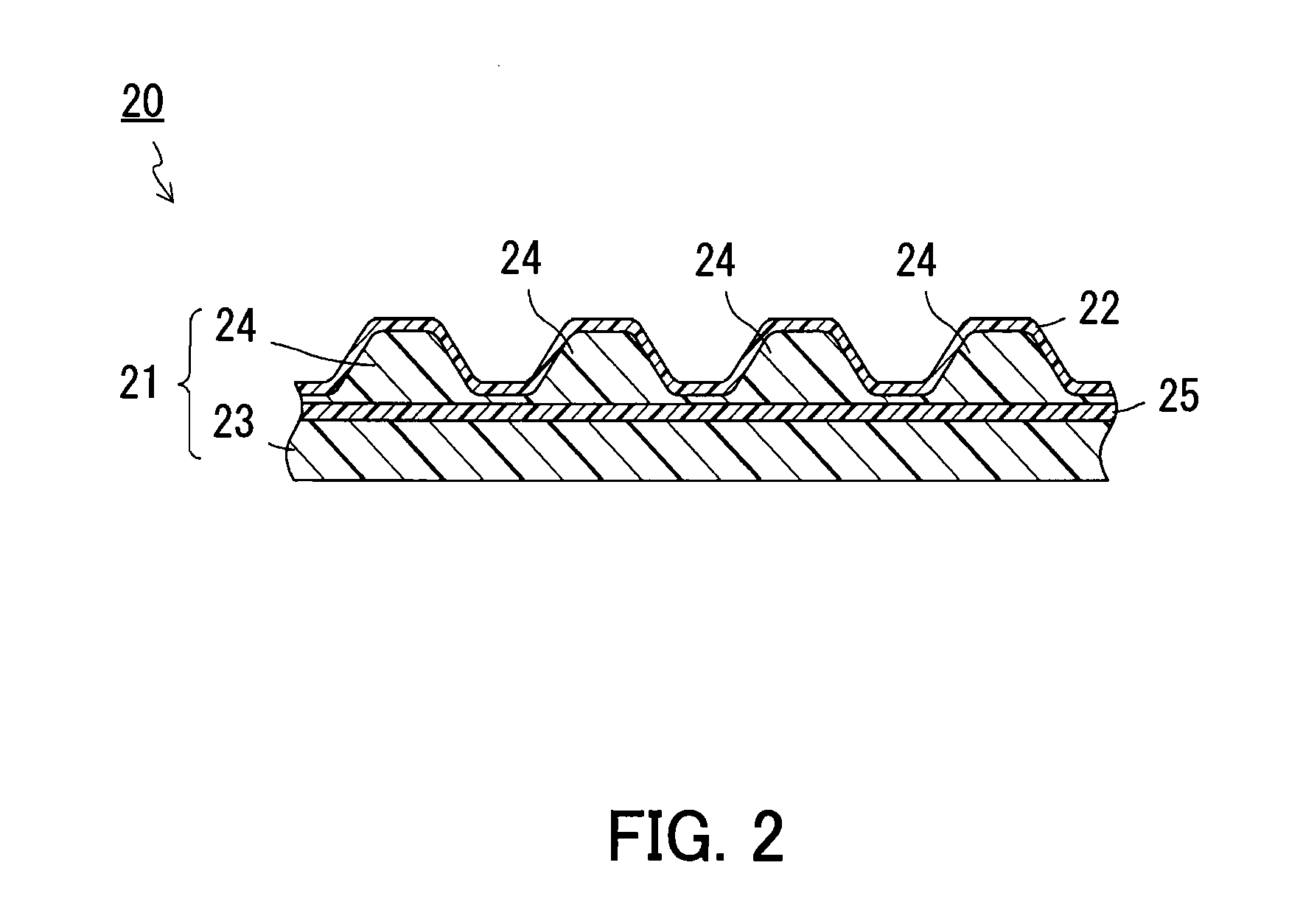Rubber-reinforcing member and rubber product utilizing the same
- Summary
- Abstract
- Description
- Claims
- Application Information
AI Technical Summary
Benefits of technology
Problems solved by technology
Method used
Image
Examples
example
[0048]Hereinafter, the present invention will be described in further detail using examples.
examples 1 to 16
[0049]Three glass fibers (each being a bundle of 200 filaments having an average diameter of 9 μm, E-glass composition) were aligned with one another to obtain a reinforcing fiber of 101 tex. The reinforcing fibers thus obtained were immersed in the first treatment agents of Examples 1 to 16, respectively, each of which had the composition shown in the following tables 1 and 2. Then, the reinforcing fibers were dried in a drying furnace set at 150° C. for 1 minute to form the first coating film thereon. Each of the reinforcing fibers with the first coating film was primarily twisted at a rate of 8 times / 10 cm, and 11 of the primarily twisted reinforcing fibers were aligned and finally twisted at a rate of 8 times / 10 cm to produce the rubber-reinforcing cords of Examples 1 to 16. The first coating films of the rubber-reinforcing cords of the Examples 1 to 16 all had an adhesion rate of 20 mass %.
examples 17 to 32
[0050]First, the cords were prepared under the same conditions as in the Examples 1 to 16, except that the second treatment agent containing the resorcin-formaldehyde condensate and the rubber latex was used instead of the first treatment agents shown in Tables 1 and 2 (here, the second treatment agent was one obtained by mixing the resorcin-formaldehyde condensate, the styrene-butadiene-vinylpyridine latex, and a carboxyl-modified styrene-butadiene rubber latex so as to satisfy a mass ratio of resorcin-formaldehyde condensate:styrene-butadiene-vinylpyridine latex:carboxyl-modified denaturation styrene-butadiene rubber latex=9:70:30). Subsequently, the first treatment agents of the Examples 1 to 16 were applied to a surface of each of these cords, respectively, and then dried in the drying furnace set at 150° C. for 1 minute to form the first coating films Thus, the rubber-reinforcing cords of Examples 17 to 32 using the first treatment agents corresponding to the first treatment ag...
PUM
| Property | Measurement | Unit |
|---|---|---|
| Percent by mass | aaaaa | aaaaa |
| Percent by mass | aaaaa | aaaaa |
| Percent by mass | aaaaa | aaaaa |
Abstract
Description
Claims
Application Information
 Login to View More
Login to View More - R&D
- Intellectual Property
- Life Sciences
- Materials
- Tech Scout
- Unparalleled Data Quality
- Higher Quality Content
- 60% Fewer Hallucinations
Browse by: Latest US Patents, China's latest patents, Technical Efficacy Thesaurus, Application Domain, Technology Topic, Popular Technical Reports.
© 2025 PatSnap. All rights reserved.Legal|Privacy policy|Modern Slavery Act Transparency Statement|Sitemap|About US| Contact US: help@patsnap.com



